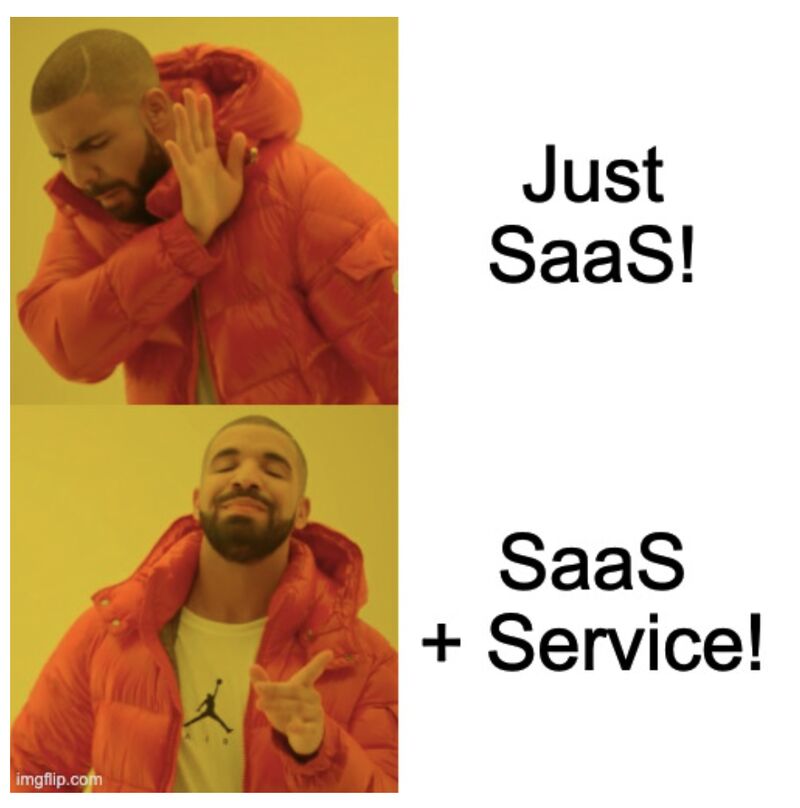Why SaaS Alone May Not Be Enough in ASEAN - Embracing SaaS+ Service
SaaS ASEAN Business Growth 5 minutes

The Southeast Asian (ASEAN) market, with its diverse economic, cultural, and technological landscapes, presents unique challenges for businesses, particularly those offering Software as a Service (SaaS) solutions. In this region, relying solely on a SaaS model often falls short of addressing the varied needs of businesses. The answer? Embracing a SaaS+ Service model—combining high-quality services with your SaaS offerings to ensure growth and success.
1. Diverse Market Needs
ASEAN is not a monolithic market. Its countries differ vastly in terms of economic development, cultural norms, and technological adoption. A one-size-fits-all SaaS solution may struggle to meet these diverse needs. By integrating tailored services alongside software, businesses can provide customized solutions that resonate with the specific requirements of different markets, making the SaaS+ Service model particularly effective.
2. Building Trust and Relationships
In ASEAN, business relationships are often built on trust and personal connections. SaaS offerings alone might not be enough to foster these critical relationships. Adding a service component allows companies to establish deeper client connections by offering hands-on support, building credibility, and forging long-term partnerships that go beyond just software.
3. Complex Implementation
Implementing SaaS solutions can be challenging, especially for businesses in ASEAN that may have limited tech infrastructure. The SaaS+ Service model offers essential support like onboarding, training, and ongoing assistance. This ensures smoother adoption, maximizes the value of the software, reduces churn, and increases overall customer satisfaction.
4. Value-Added Offerings
Bundling SaaS with additional services such as data analysis or consulting not only differentiates a business from its competitors but also justifies premium pricing. This combination creates additional revenue streams, making the SaaS+ Service model a lucrative strategy for companies operating in ASEAN.
5. Navigating Regulatory Environments
ASEAN's regulatory landscapes are complex and vary from country to country. A SaaS+ Service model allows businesses to offer localized expertise and compliance support, ensuring that their solutions are not only effective but also legally sound across different markets.
Examples of SaaS+ Service Success in ASEAN
1. Deliveree On-Demand Logistics (Southeast Asia)
Deliveree combines its SaaS platform for on-demand logistics with comprehensive services like driver training and management, bespoke process mapping, and route optimization. This combination helps businesses manage logistics effectively across the region.
2. Lazada
Lazada enhances its e-commerce platform by offering seller training, logistics support, and marketing solutions. These services foster long-term loyalty among sellers, ensuring the platform’s continued success.
3. Fiuu (formerly Razer Merchant Services)
Fiuu Fintech pairs its SaaS solutions for digital payments with consulting services to ensure seamless integration and compliance, helping businesses navigate the complexities of digital transactions in ASEAN.
Conclusion: The Essential Role of SaaS+ Service in ASEAN
In ASEAN’s diverse and dynamic market, the SaaS+ Service model is not just an option; it's a necessity. By embracing this model, businesses can enhance customer experiences, build lasting relationships, and differentiate themselves in an increasingly competitive landscape. Whether it's through providing tailored support, building trust, or navigating regulatory challenges, combining SaaS with high-quality services is key to thriving in ASEAN.
Related Posts
-

eCommerce AI Business Growth Business 2 Minutes
BA3 Studio: Powering eCommerce Growth with AI in Vietnam
BA3 Studio is revolutionizing Vietnamese eCommerce with its AI-powered platform, offering real-time insights, automation, and market intelligence to optimize sales on Shopee, Lazada, and TikTok Shop. Targeting a high-growth market, this innovative company has already secured significant partnerships and is poised for rapid expansion across Southeast Asia. Investors are taking notice of its unique AI-first approach, strong traction, and visionary leadership, presenting an attractive opportunity in the booming digital economy. -

Betatron Venture Group Investing B2B SaaS Business Growth 6 Minutes
Betatron Venture Group: Investing with the Exit in Mind Across Asia's B2B Frontier
Betatron Venture Group is a Hong Kong-based early-stage VC firm backing scalable B2B startups that digitize Asia’s largest traditional industries. With a US$50M fund and a disciplined focus on sectors like logistics, construction, fintech, and industrial SaaS, Betatron invests US$500K–$2M in Seed to Series A rounds across high-growth markets in South and Southeast Asia. The firm is known for its exit-focused thesis, deep regional network, and hands-on support guiding founders toward strategic acquisition or IPO. -

startup pivot business growth Mike Cappelle 2 minutes
The Startup Pivot: From Bright Ideas to ‘What the Hell Were We Thinking?’
Pivoting a startup can be a rollercoaster, where bright ideas sometimes lead to hard lessons. Explore how changing course can make or break a business, with insights from WOWS' Co-Founder and COO, Mike Cappelle. -

capital raising Business Business Growth B2B Southeast Asia startups 4 Minutes
Ally Global: Strategic Capital for the Brave and Bold in Emerging Markets
Ally Global is redefining what it means to be a founder-first VC in emerging markets. From fintech to agri-tech, they’re backing bold startups solving foundational problems across Africa, MENA, and Southeast Asia—with real capital, deep networks, and operator-led insight.
